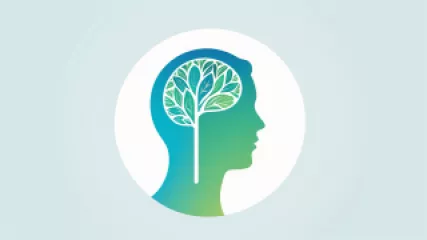My Journey with Mental Health Apps: Finding the Right Fit
My Journey with Mental Health Apps: Finding the Right Fit
As someone who has always been passionate about mental health and personal growth, I've long been intrigued by the potential of mental health apps to offer support, guidance, and tools for managing our emotional well-being. In a world where the demands and stresses of modern life can often feel overwhelming, the promise of having a personalized, accessible resource at our fingertips has been alluring. Yet, with the ever-growing number of options available, navigating the mental health app landscape can be a daunting task.
My own journey with mental health apps began several years ago when I found myself struggling with a particularly challenging period in my life. Feeling isolated and unsure of where to turn, I decided to explore the world of mental health technology, hoping to find a solution that could provide the support and insights I so desperately needed.
The Initial Search: Overwhelmed by Options
As I began my search, I was immediately struck by the sheer number of mental health apps available. From meditation and mindfulness apps to mood trackers, therapy-focused platforms, and everything in between, the choices seemed endless. I found myself spending countless hours reading reviews, comparing features, and trying to determine which app might be the best fit for my needs.
The process was both exciting and overwhelming. On one hand, I was grateful to have access to such a wide array of tools and resources, all designed to support my mental health journey. On the other hand, the abundance of options made it challenging to make a decision, as I found myself constantly second-guessing my choices and worrying that I might be missing out on something better.
Trial and Error: Finding the Gems Amid the Noise
Undeterred, I dove in, downloading and trying out a variety of mental health apps, each promising to offer a unique approach to improving my well-being. Some were a perfect fit, providing me with the guidance, support, and practical tools I needed to navigate my challenges. Others, however, fell short, leaving me feeling frustrated and disheartened.
Through this trial-and-error process, I learned valuable lessons about what to look for in a mental health app. I discovered that the most effective solutions were often the ones that combined evidence-based techniques with a user-friendly interface and personalized features. Apps that prioritized engagement, accountability, and a holistic approach to mental health quickly rose to the top of my list.
The Importance of Customization
As I continued my exploration, I also came to realize the importance of customization when it comes to mental health apps. What works for one person may not be the best fit for another, and it's crucial to find a solution that aligns with your unique needs, preferences, and goals.
Some apps, for instance, specialized in cognitive-behavioral therapy (CBT) techniques, while others focused on mindfulness and meditation. Some offered a more clinical approach, while others leaned more towards a wellness-oriented perspective. By taking the time to understand my own needs and preferences, I was able to narrow down my search and find apps that truly resonated with me.
The Power of Community and Connection
Another key aspect of my journey with mental health apps was the realization of the profound impact that community and connection can have on our well-being. Many of the most effective apps I encountered not only provided personalized tools and resources but also fostered a sense of belonging and support through community features.
Whether it was the ability to connect with like-minded individuals, participate in group discussions, or receive encouragement and accountability from peers, these community-driven aspects of mental health apps quickly became some of the most valuable and meaningful aspects of my experience.
The Importance of Data Privacy and Security
As I delved deeper into the world of mental health apps, I also became increasingly aware of the importance of data privacy and security. Entrusting our most intimate thoughts and struggles to digital platforms is a major decision, and it's crucial that these apps prioritize the protection of our personal information.
I found myself scrutinizing the privacy policies and data security measures of the apps I was considering, ensuring that my sensitive information would be safeguarded and that the app's approach to data management aligned with my own values and expectations.
The Ongoing Pursuit of Balance and Moderation
Throughout my journey, I also came to understand the importance of balance and moderation when it comes to the use of mental health apps. While these tools can be incredibly valuable, it's important not to become overly dependent on them or to use them as a replacement for more traditional forms of support, such as therapy or counseling.
I found that the most successful approach was to integrate mental health apps into a holistic self-care routine, complementing them with other healthy habits and practices that supported my overall well-being. This balanced approach helped me to avoid the pitfalls of overreliance and ensure that I was truly benefiting from the resources available to me.
Embracing the Ongoing Journey
As I reflect on my journey with mental health apps, I am struck by the profound impact they have had on my life. These digital tools have not only provided me with practical support and guidance but have also served as a catalyst for deeper self-exploration, personal growth, and a greater understanding of the complexities of mental health.
While the road has not always been smooth, and I have encountered both successes and setbacks along the way, I am grateful for the lessons I have learned and the insights I have gained. Mental health apps have become an integral part of my self-care routine, complementing the other strategies and resources I employ to maintain my emotional well-being.
As I continue to navigate the ever-evolving landscape of mental health technology, I remain committed to an open and curious approach, always seeking out new and innovative solutions that can help me and others on our respective journeys. I am hopeful that the lessons I have learned and the experiences I have shared will inspire and empower others to embark on their own transformative explorations of mental health apps, ultimately leading to a greater sense of connection, resilience, and well-being for all.
Key Takeaways:
- The mental health app landscape can be overwhelming, but taking the time to explore and experiment can lead to finding the right fit.
- Customization is key – what works for one person may not be the best solution for another. Understand your unique needs and preferences.
- Community and connection are powerful aspects of mental health apps, providing support, accountability, and a sense of belonging.
- Data privacy and security should be a top priority when choosing a mental health app to protect your sensitive information.
- Balance and moderation are crucial – mental health apps should complement, not replace, other forms of support and self-care practices.
- The journey with mental health apps is an ongoing one, filled with both successes and setbacks, but ultimately leading to greater self-understanding and well-being.
As I continue to navigate the ever-evolving landscape of mental health technology, I remain committed to an open and curious approach, always seeking out new and innovative solutions that can help me and others on our respective journeys. I am hopeful that the lessons I have learned and the experiences I have shared will inspire and empower others to embark on their own transformative explorations of mental health apps, ultimately leading to a greater sense of connection, resilience, and well-being for all.
Remember, the journey with mental health apps is a highly personal one, and what works for me may not be the perfect fit for you. The key is to approach it with an open mind, a willingness to experiment, and a deep respect for your own unique needs and preferences. By doing so, you may just discover the digital tools and resources that can truly transform your mental health journey.
So, let's embrace the power of mental health apps, but let's also remember to stay grounded, balanced, and true to ourselves. Together, we can navigate this exciting new frontier, empowered to take control of our well-being and create the life we envision.






